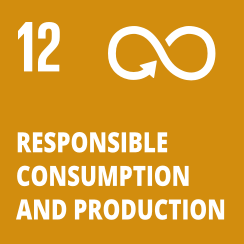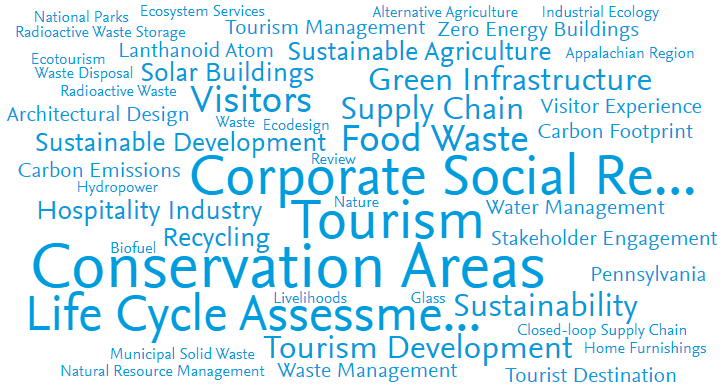
Ensure sustainable consumption and production patterns
This goal considers natural resources, consumer habits, procurement and waste practices, as well as industry and tourism. Targets include sustainable management and efficient use of natural resources; reducing global food waste and loss at the retail and consumer levels; environmentally sound management of chemicals and all wastes; reducing waste generation through prevention, reduction, recycling and reuse; encouraging companies to adopt sustainable practices and integrate sustainability information into their reporting cycle; promoting sustainable public procurement practices; providing information and awareness for sustainable development and lifestyles in harmony with nature; strengthening scientific and technological capacity to move towards more sustainable patterns of consumption and production; monitoring sustainable development impacts for sustainable tourism; and, removing market distortions to reflect fossil-fuel subsidy environmental impacts. Learn more about this goal in the Targets & Indicators section below.

Source: SciVal.com | This word cloud was created using publications from Penn State researchers
Related News
Housing and Food Services transitioning away from using Styrofoam products
Penn State Housing and Food Services will no longer use Styrofoam products at its residential dining locations at University Park and the Commonwealth Campuses. As of Aug. 14, all dining locations will use either recyclable [...]
Targets & Indicators
Target 12.1: Implement the 10‑Year Framework of Programs on Sustainable Consumption and Production Patterns, all countries taking action, with developed countries taking the lead, taking into account the development and capabilities of developing countries
- Indicator 12.1.1: Number of countries developing, adopting or implementing policy instruments aimed at supporting the shift to sustainable consumption and production
Target 12.2: By 2030, achieve the sustainable management and efficient use of natural resources
- Indicator 12.2.1: Material footprint, material footprint per capita, and material footprint per GDP
- Indicator 12.2.2: Domestic material consumption, domestic material consumption per capita, and domestic material consumption per GDP
Target 12.3: By 2030, halve per capita global food waste at the retail and consumer levels and reduce food losses along production and supply chains, including post-harvest losses
- Indicator 12.3.1: (a) Food loss index and (b) food waste index
Target 12.4: By 2020, achieve the environmentally sound management of chemicals and all wastes throughout their life cycle, in accordance with agreed international frameworks, and significantly reduce their release to air, water and soil in order to minimize their adverse impacts on human health and the environment
- Indicator 12.4.1: Number of parties to international multilateral environmental agreements on hazardous waste, and other chemicals that meet their commitments and obligations in transmitting information as required by each relevant agreement
- Indicator 12.4.2: (a) Hazardous waste generated per capita; and (b) proportion of hazardous waste treated, by type of treatment
Target 12.5: By 2030, substantially reduce waste generation through prevention, reduction, recycling and reuse
- Indicator 12.5.1: National recycling rate, tons of material recycled
Target 12.6: Encourage companies, especially large and transnational companies, to adopt sustainable practices and to integrate sustainability information into their reporting cycle
- Indicator 12.6.1: Number of companies publishing sustainability reports
Target 12.7: Promote public procurement practices that are sustainable, in accordance with national policies and priorities
- Indicator 12.7.1: Degree of sustainable public procurement policies and action plan implementation
Target 12.8: By 2030, ensure that people everywhere have the relevant information and awareness for sustainable development and lifestyles in harmony with nature
- Indicator 12.8.1: Extent to which (i) global citizenship education and (ii) education for sustainable development are mainstreamed in (a) national education policies; (b) curricula; (c) teacher education; and (d) student assessment
Target 12.a: Support developing countries to strengthen their scientific and technological capacity to move towards more sustainable patterns of consumption and production
- Indicator 12.a.1: Installed renewable energy-generating capacity in developing countries (in watts per capita)
Target 12.b: Develop and implement tools to monitor sustainable development impacts for sustainable tourism that creates jobs and promotes local culture and products
- Indicator 12.b.1: Implementation of standard accounting tools to monitor the economic and environmental aspects of tourism sustainability
Target 12.c: Rationalize inefficient fossil-fuel subsidies that encourage wasteful consumption by removing market distortions, in accordance with national circumstances, including by restructuring taxation and phasing out those harmful subsidies, where they exist, to reflect their environmental impacts, taking fully into account the specific needs and conditions of developing countries and minimizing the possible adverse impacts on their development in a manner that protects the poor and the affected communities
- Indicator 12.c.1: Amount of fossil-fuel subsidies (production and consumption) per unit of GDP






